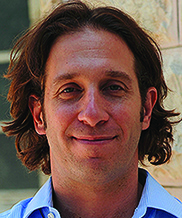The Trials and Tribulations of Narrative in VR: The Stanford Ocean Acidification Experience
The Stanford Ocean Acidification Project allows users to stand in heavy traffic and follow carbon dioxide molecules from car tailpipes to the sea, where they are absorbed. Deep below the waves, users can move amid coral as it loses its vitality and observe the effects of increasingly acidic water on marine life. During the experience a narrator explains the processes unfolding before you and encourages you to interact by doing activities such as a species count. Hand controls with haptic feedback make the experience more immersive.
 Jeremy Bailenson is founding director of Stanford University’s Virtual Human Interaction Lab, Thomas More Storke Professor in the Department of Communication, a Senior Fellow at the Woods Institute for the Environment, Faculty Director of Stanford’s Digital Learning Forum, and a Faculty Leader at Stanford’s Center for Longevity. Bailenson studies the psychology of Virtual Reality (VR), in particular how virtual experiences lead to changes in perceptions of self and others. His lab builds and studies systems that allow people to meet in virtual space, and explores the changes in the nature of social interaction. His most recent research focuses on how VR can transform education, environmental conservation, empathy, and health.
Jeremy Bailenson is founding director of Stanford University’s Virtual Human Interaction Lab, Thomas More Storke Professor in the Department of Communication, a Senior Fellow at the Woods Institute for the Environment, Faculty Director of Stanford’s Digital Learning Forum, and a Faculty Leader at Stanford’s Center for Longevity. Bailenson studies the psychology of Virtual Reality (VR), in particular how virtual experiences lead to changes in perceptions of self and others. His lab builds and studies systems that allow people to meet in virtual space, and explores the changes in the nature of social interaction. His most recent research focuses on how VR can transform education, environmental conservation, empathy, and health.